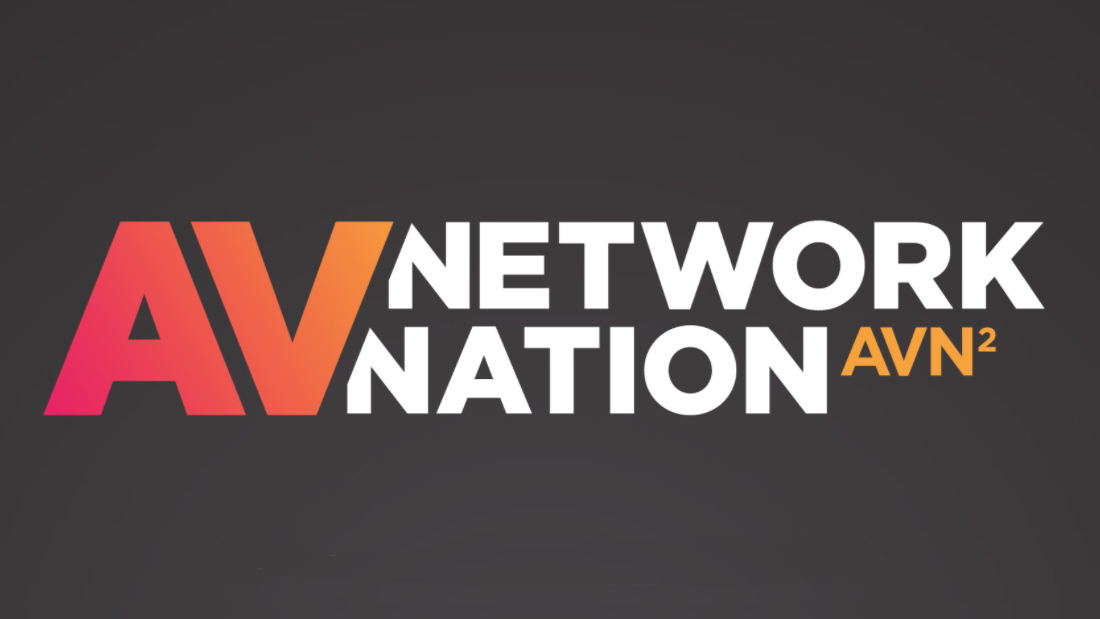AV Network Nation Panel Talks Delivering Better AVoIP Systems

While the AV-over-IP transformation has been underway for some time, there are many reasons why it’s far from ubiquitous. The AV Network Nation session “31 Flavors of AVoIP” addressed some of the many facets of the evolving landscape of AV transport, including when to opt for AV over IP, considerations around infrastructure, and the advantages that networked AV presents beyond just moving signals.
Moderated by Tim Albright of AVNation Media, panelists included Frank Padikkala of Diversified, Gabi Shriki of Valens and the HDBaseT Alliance, Joe Way of University of Southern California, and Erica Williams of Henderson Engineers.
First, the panel discussed what they factor in when considering a deployment. For Williams, who is a corporate AV manager, a good place to start is to by examining the existing network infrastructure to see if it’s workable for a new solution. “I also double check whether we’re going to buy any new switches in the upcoming future, because that’s going to make that decision easier.”

This panel and all the others that took place during AV Network Nation are available on demand. Visit avnetworknation.vfairs.com and log in to watch recorded discussions.
While you're there, don't forget to visit the exhibit hall to see what technologies our sponsors have on display.
The AV Network Nation Virtual Exhibition will be live until Jan. 7.
From the integrator side, Diversified’s Padikkala said that he likes to “take a holistic view of things and just understand what the client is looking for,” he said. “It may just be that I’ll go back to the client and say ‘You can do that with an HDMI cable; we don’t even need AV-over-IP there.’”
Padikkala’s point resonated with Shriki, who stressed the distinct use cases for various signal transport typologies. “You need to combine the available technologies to make the best and most efficient system for my customer,” he said. For the smallest systems, HDMI video is usually best; if extension within the room is needed, HDBaseT might be best; and if extension across a building or campus is required, then you probably need to go over the IP network.
For USC’s Way, this decision also comes down to more than distance constraints. “Ninety-five percent of the time you’re keeping things contained in one space,” he said. “It really comes down to two things: scalability and delivering a frictionless experience,” with the latter including the ability to add additional capabilities like emergency notifications.
Panelists also addressed the erosion of demand for high-quality conferencing by “good-enough” solutions like Zoom and Microsoft Teams, which have become ubiquitous during the pandemic. Padikkala said it’s a trade-off that comes down to understanding the customer. “If I have to [conference] out of the room, can I do that with Zoom or Teams, which are very cost effective?” he said. “If not, then choose the right encoder/decoder technology to do so.”
A daily selection of features, industry news, and analysis for AV/IT professionals. Sign up below.
In terms of the AV over IP’s tangential benefits, a Williams pointed to remote monitoring, “especially for companies that are spread out across large areas,” referencing her firm’s 70-plus conference rooms across the country. “When you’re responsible for supporting all of these rooms, and you can come in in the morning and check on [the status of everything], I think that’s super important.”
Other talking points included the ability to generate actionable insights on usage data, issues surrounding latency, and the different kinds of applications that demand 10Gb versus 1Gb solutions.
Lastly, panelists touched on a crucial factor for AV-over-IP deployments: being conversant in IT to foster better interdepartmental collaboration. “Where we fail is when [IT staff] come to you and ask ‘What ports would I need to open on my firewall, what kind of control list would I have to generate?’ and our response is a 60-page whitepaper from a manufacturer that they do not have time to read,” Padikkala said. “You need to be able to sit there and explain to them ‘This is how it’s going to work.’”
“We’re in this together,” Way agreed, pointing out that oftentimes IT staff are receptive to helping. “It’s allowing yourself to come in and say ‘I don’t understand this, teach me; let’s do this.’ And you’ll find that you get a lot of traction. I think a lot of times we’re trying to sell our own stuff instead of trying to understand things from their point of view.”
All of the AV Network Nation content—including the exhibit hall—is available on demand for the next four weeks. To learn more, visit avnetworknation.com.
Matt Pruznick is the former editor of AV Technology, and senior editor for Systems Contractor News and Residential Systems. He is based in New York.

